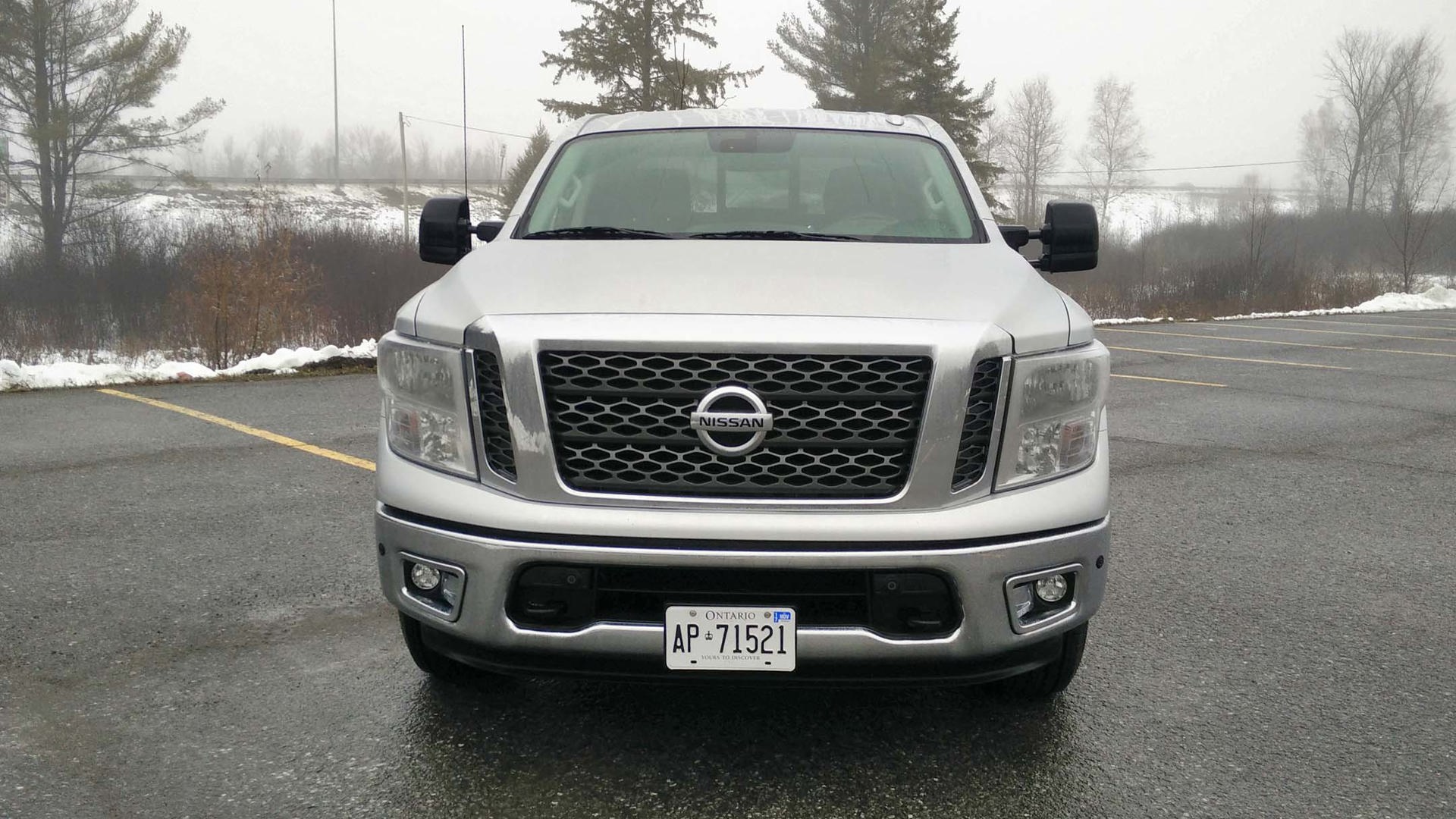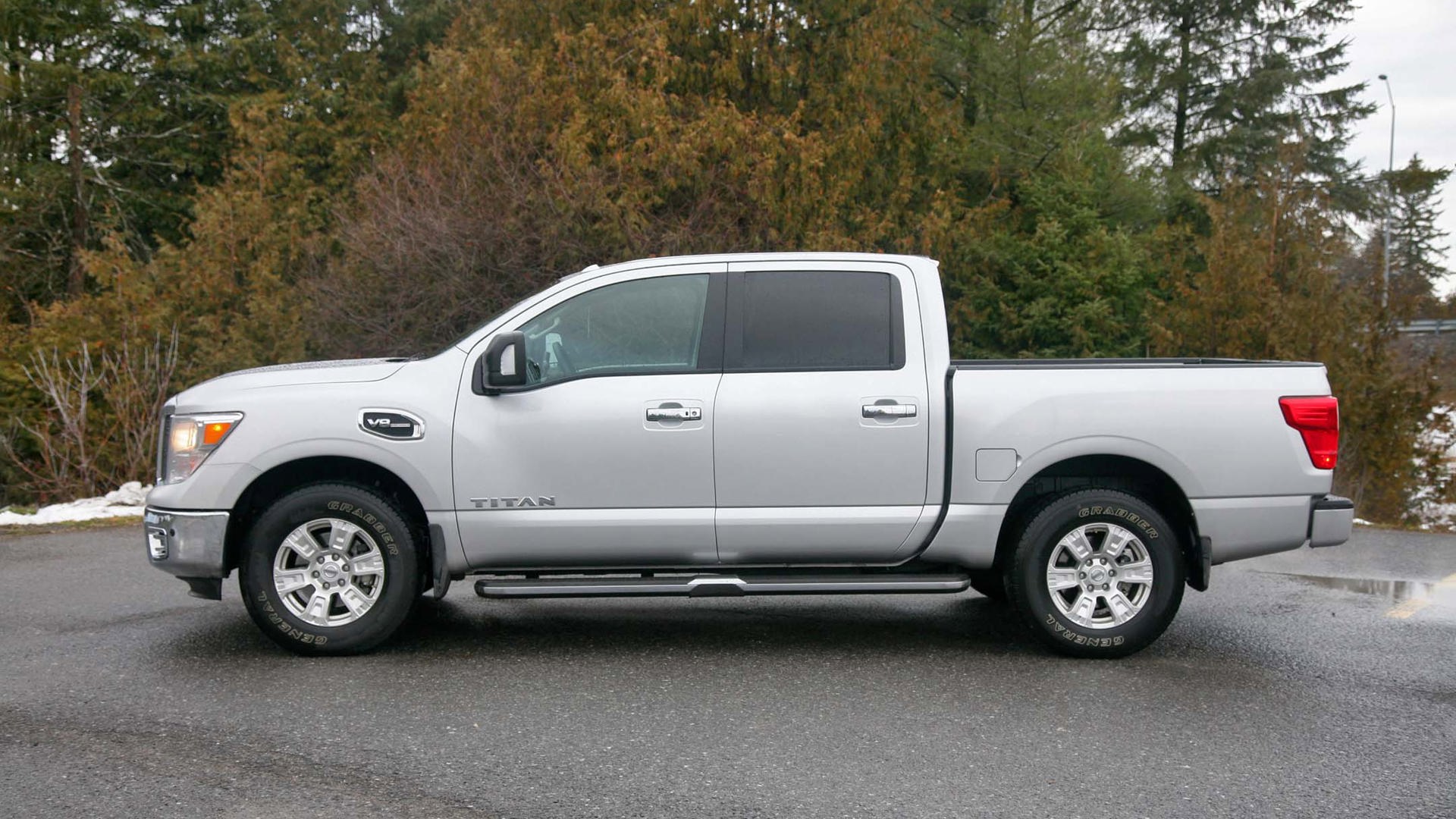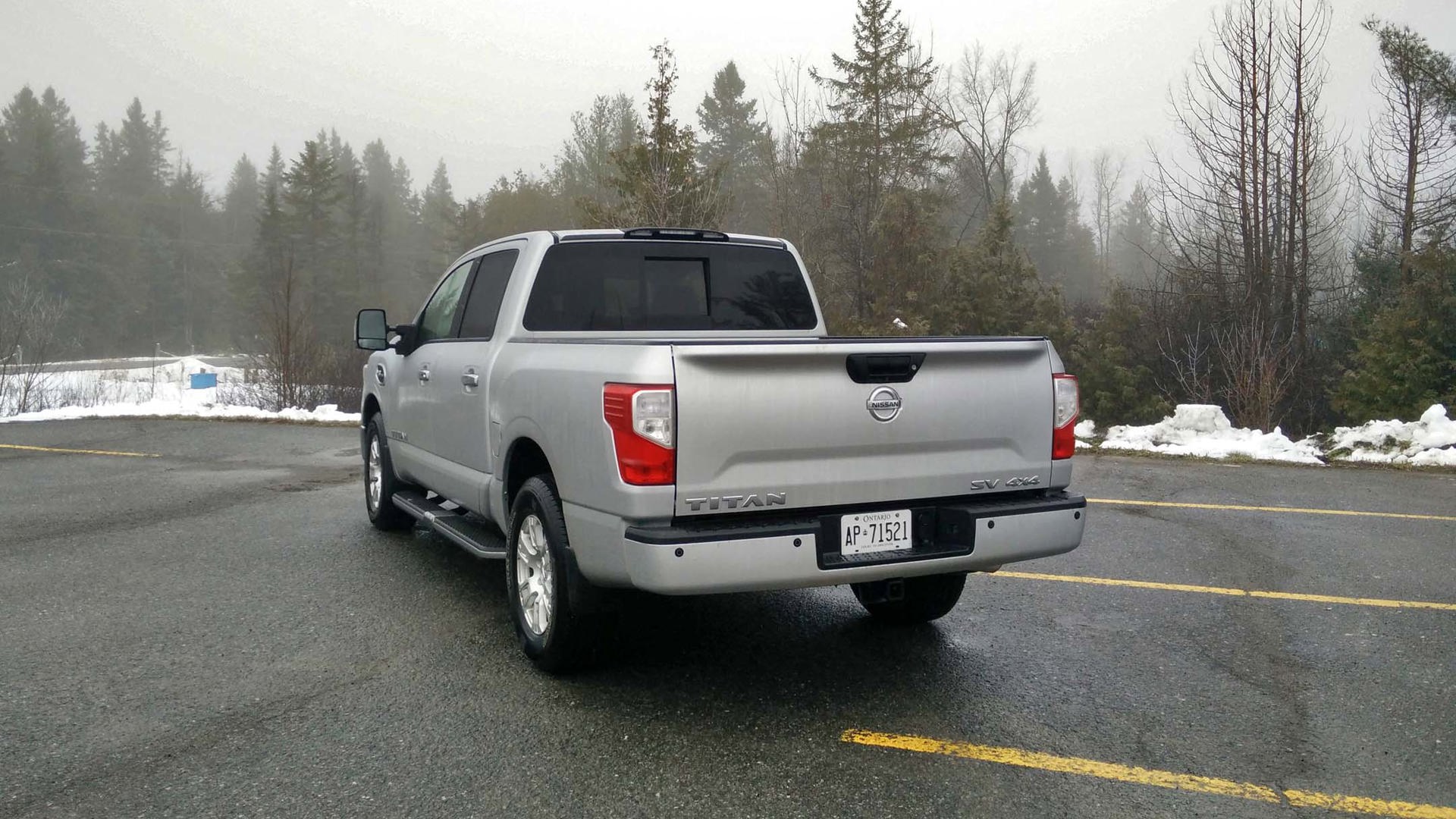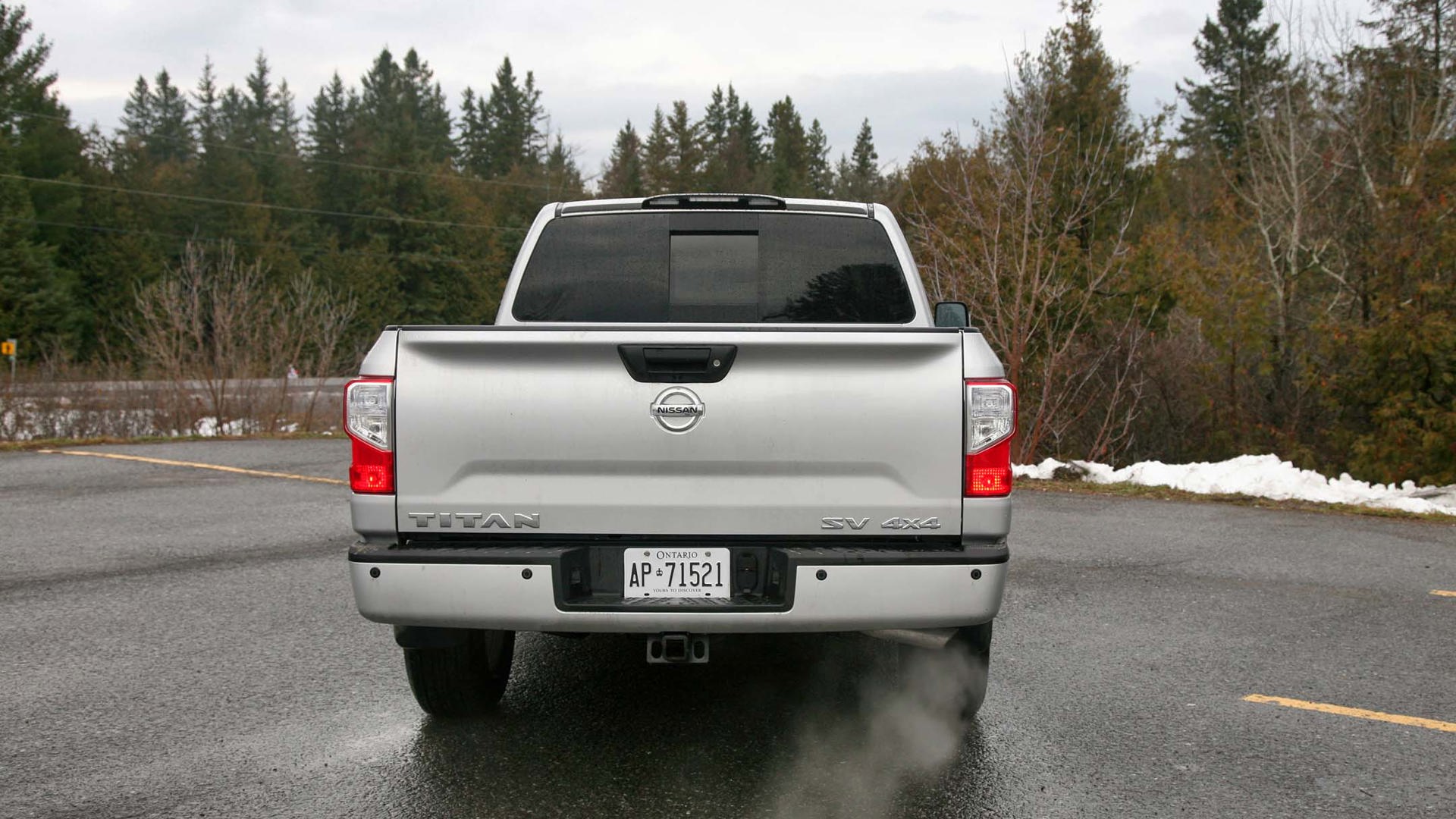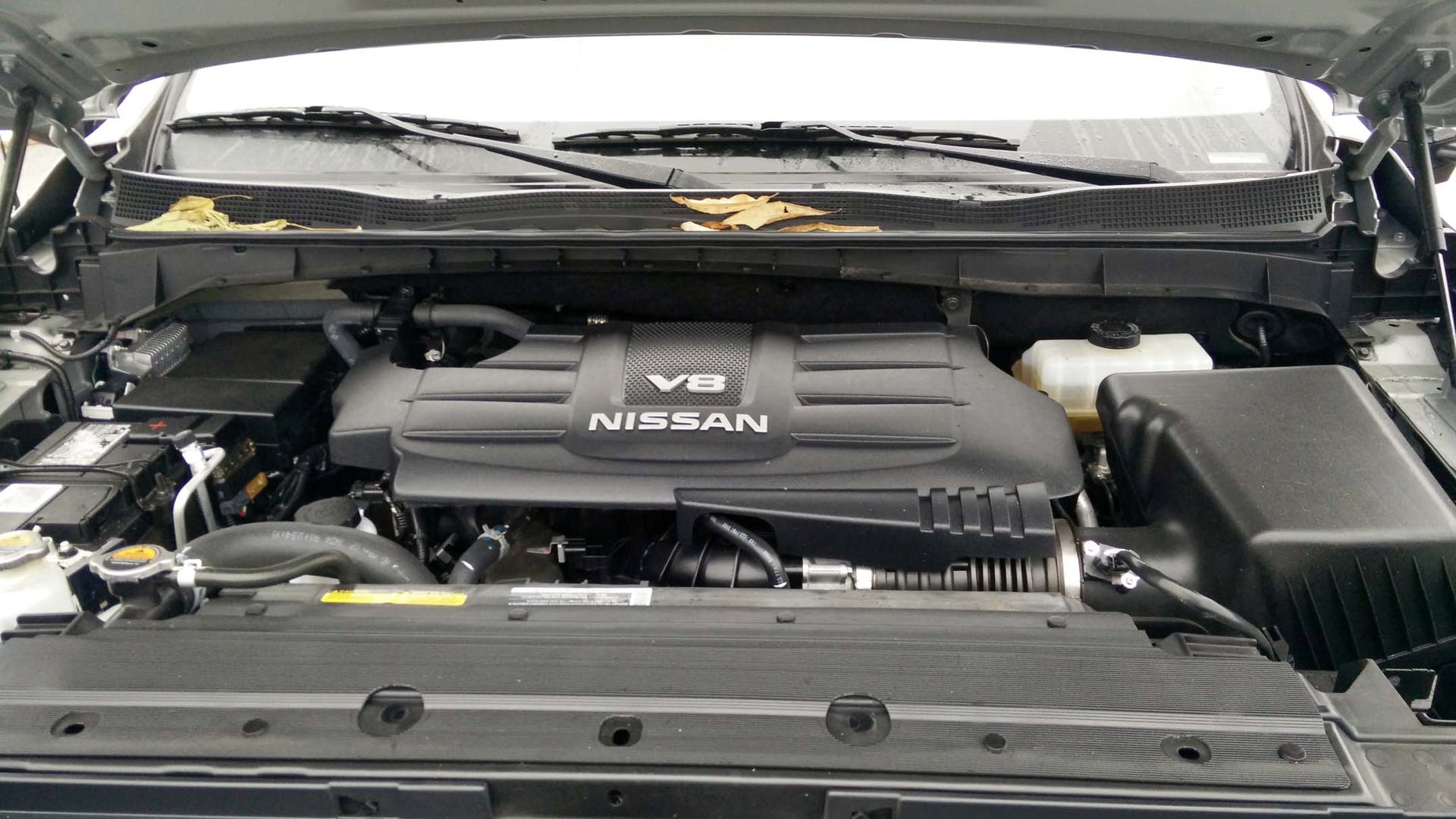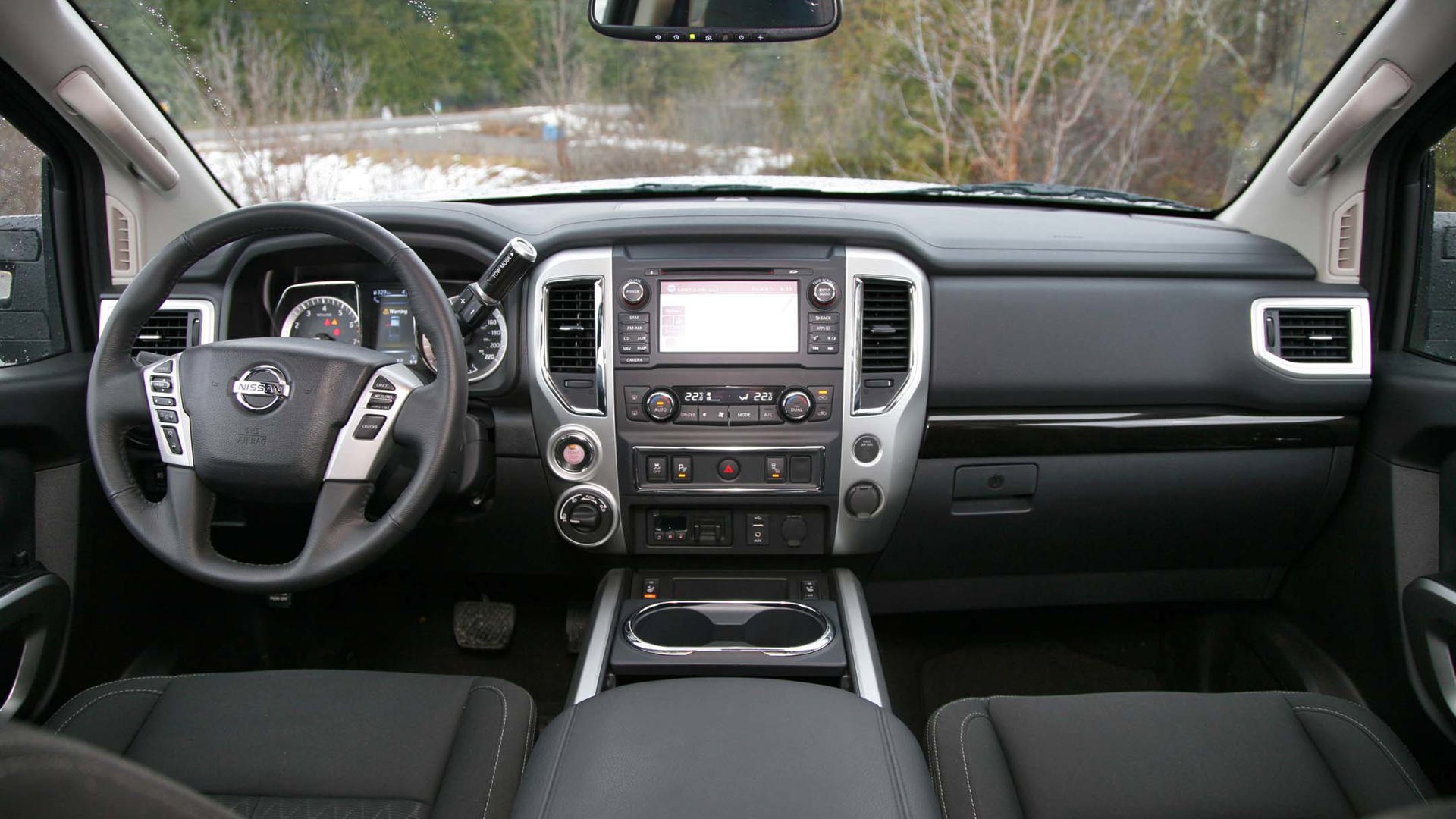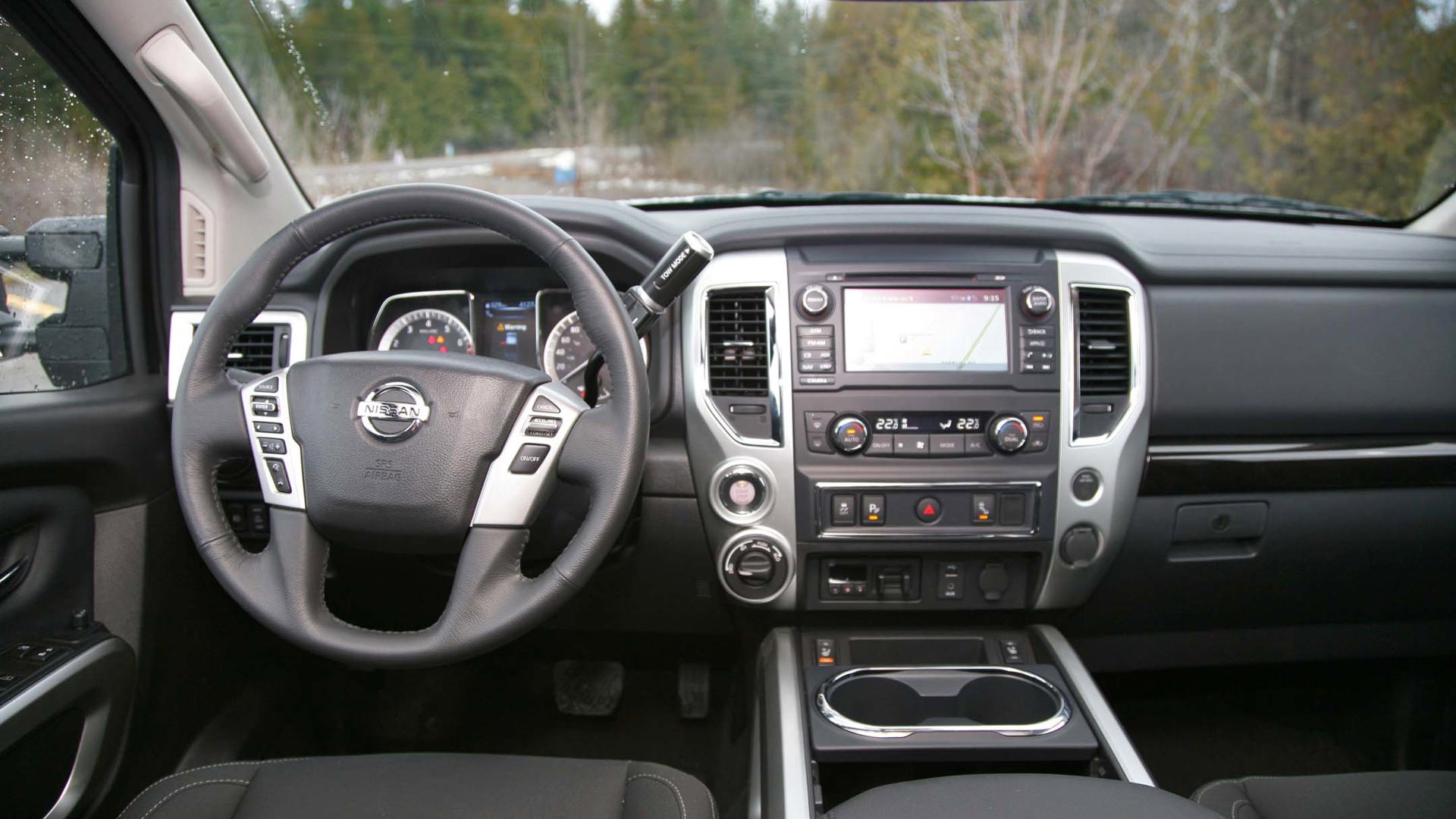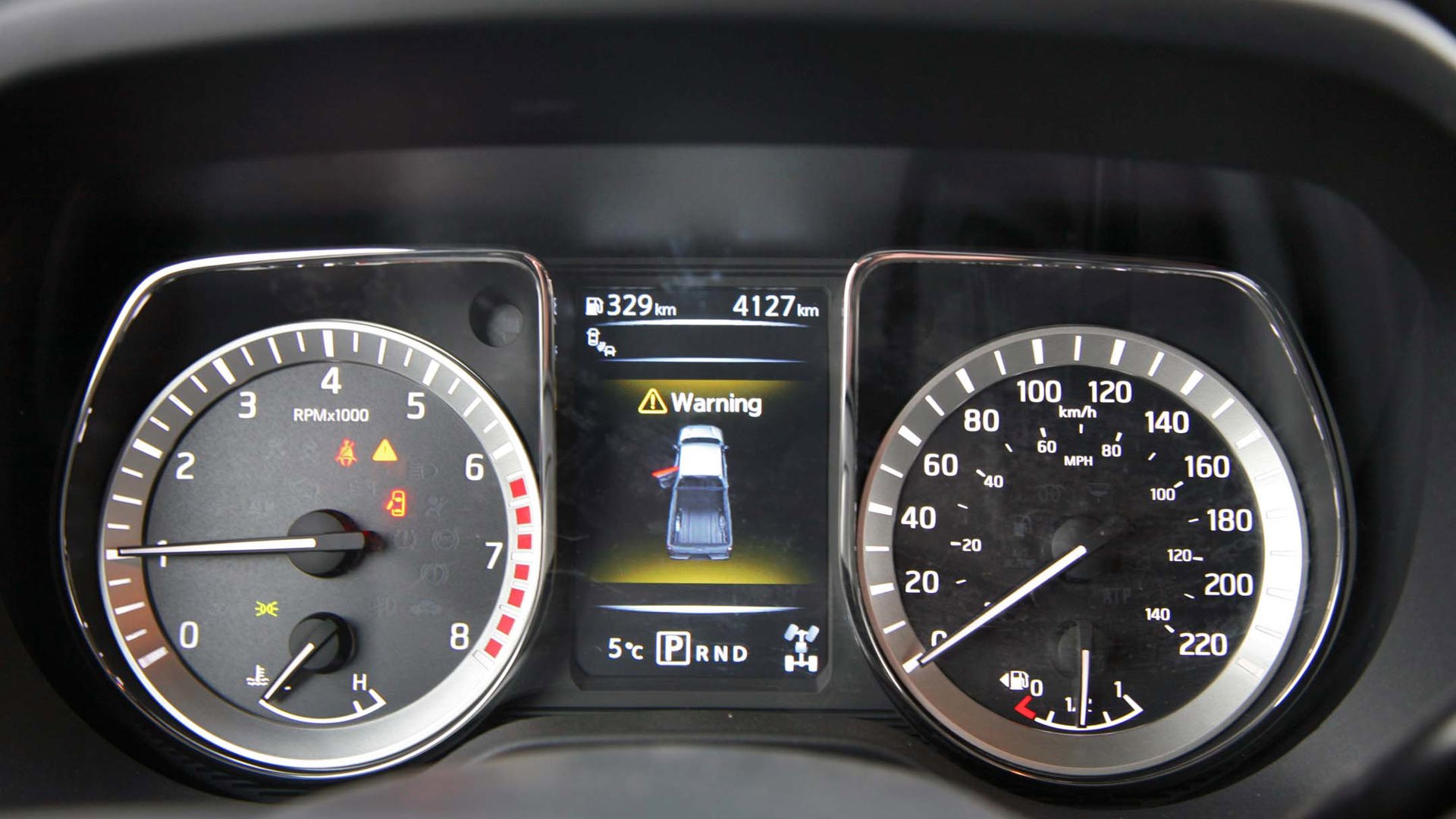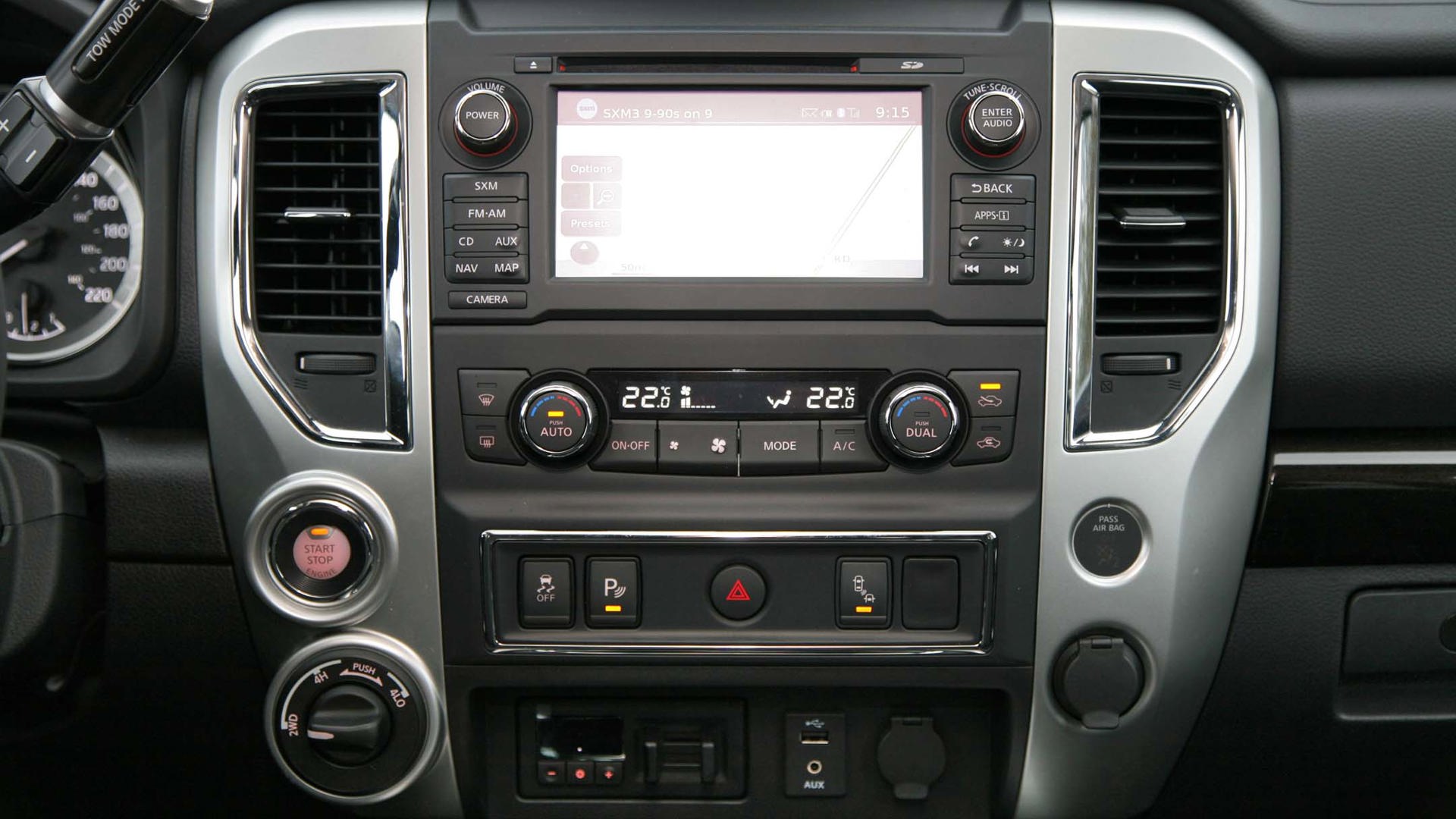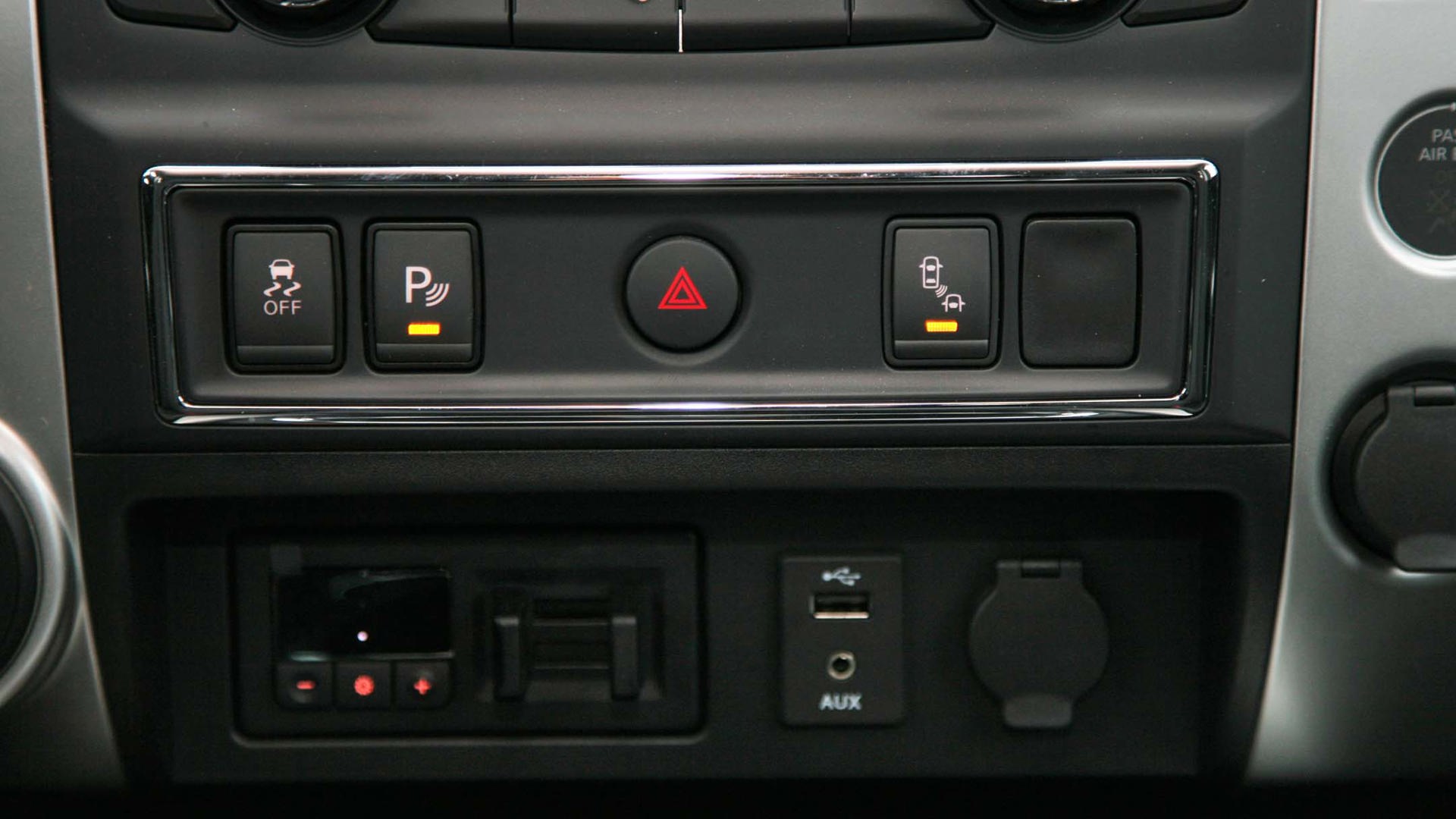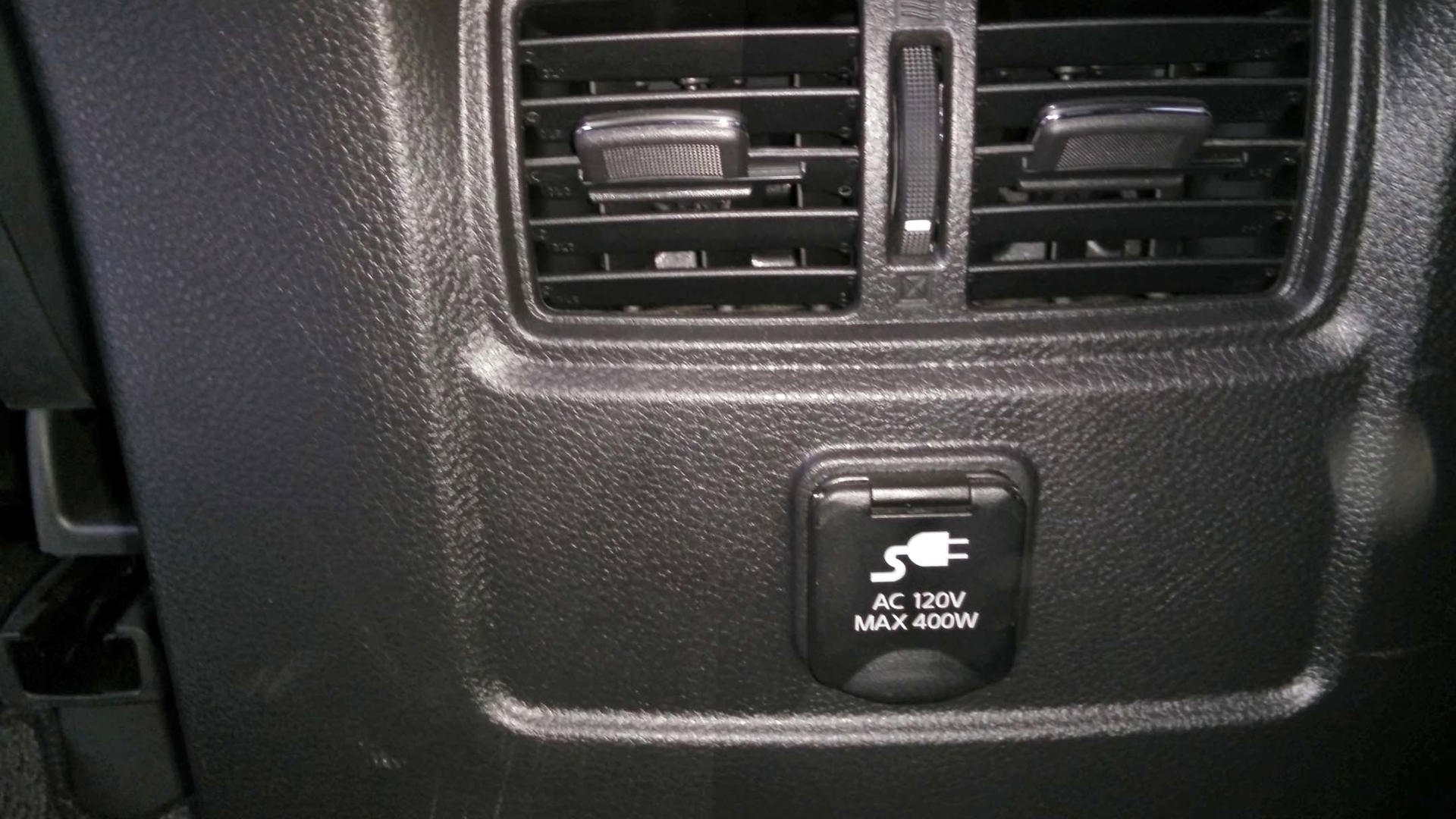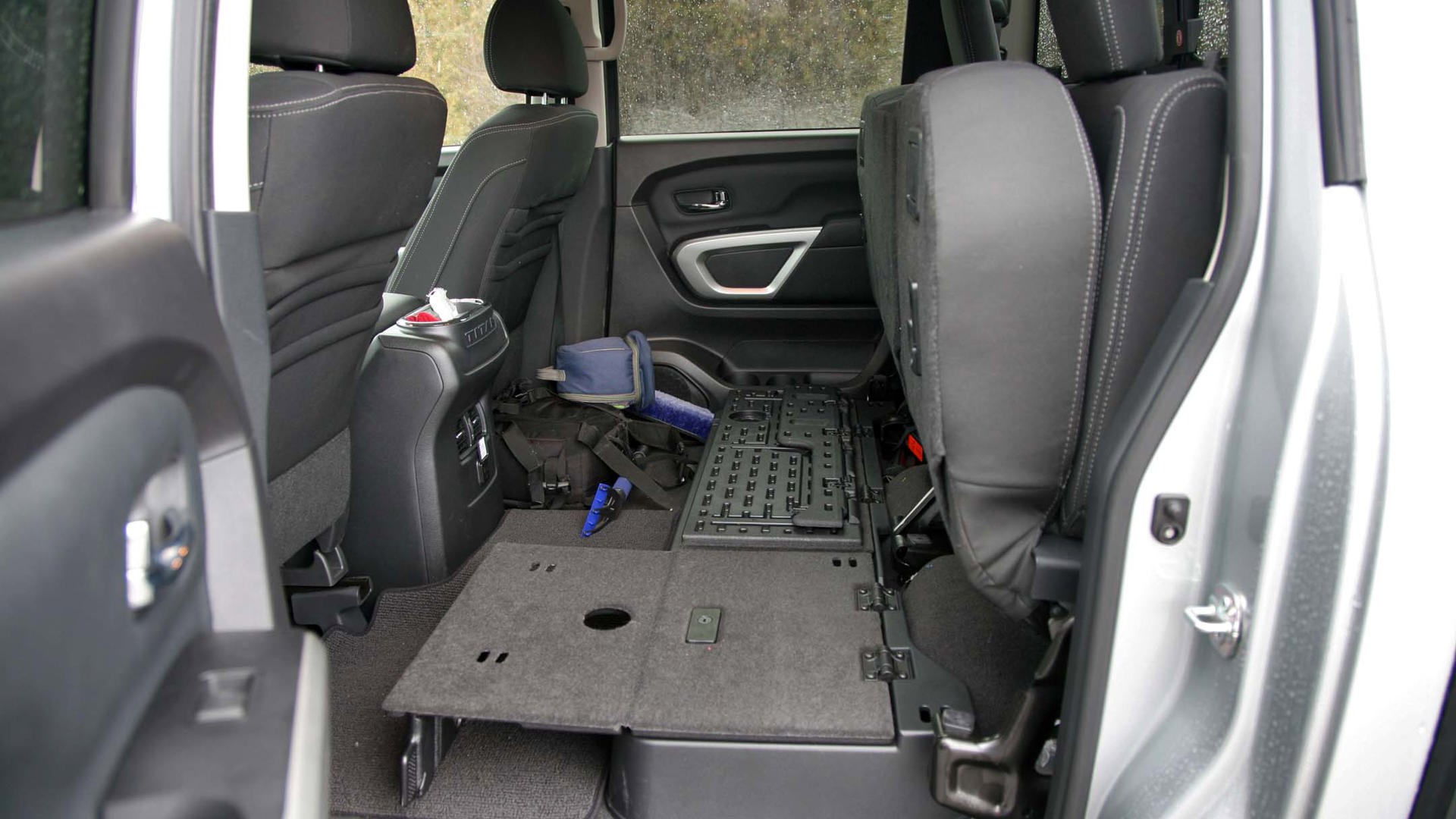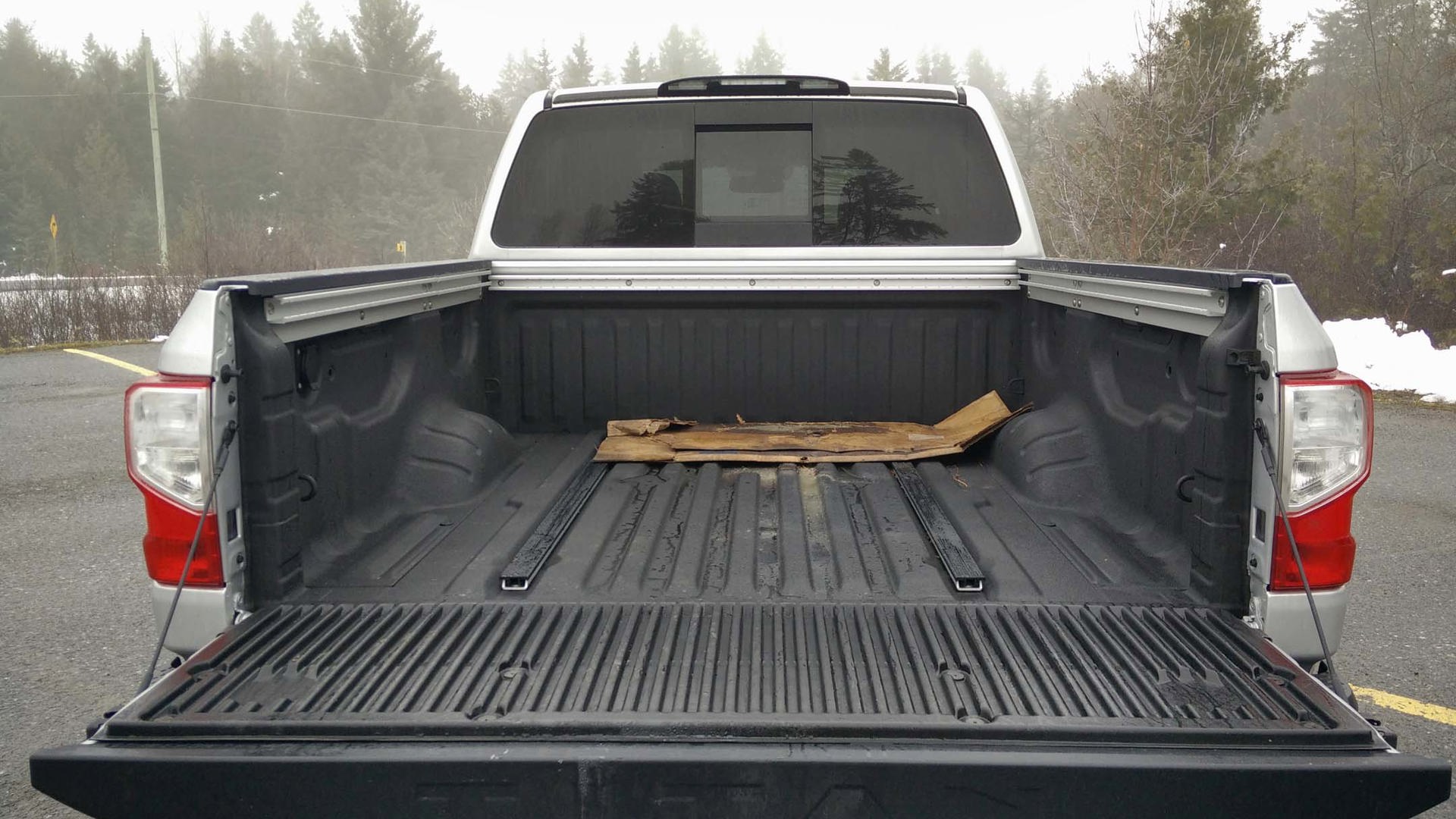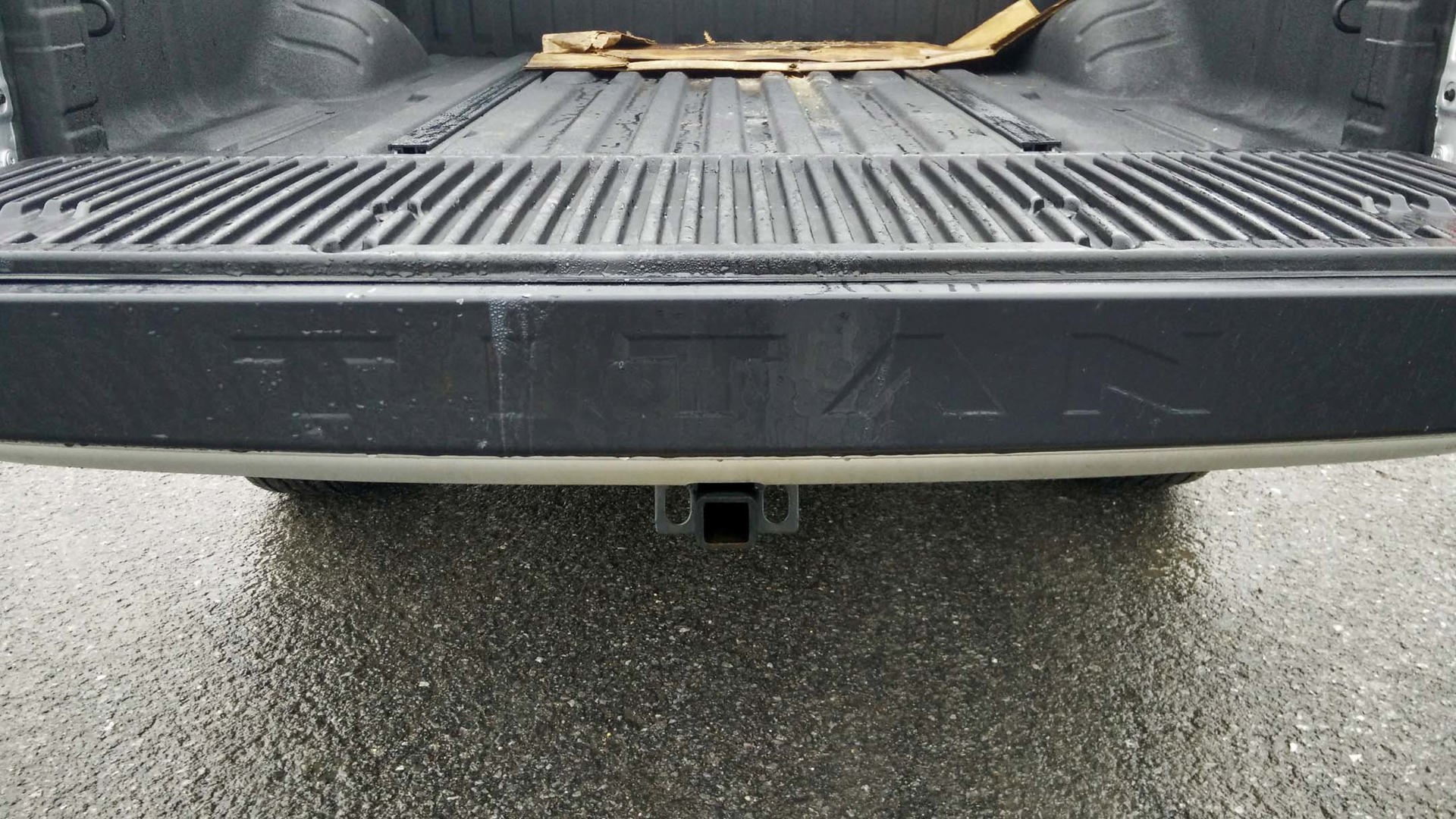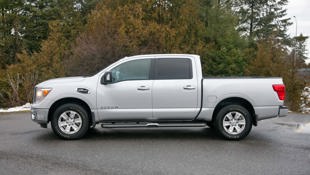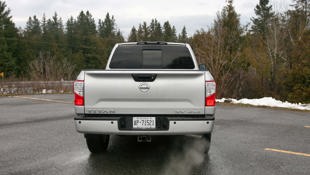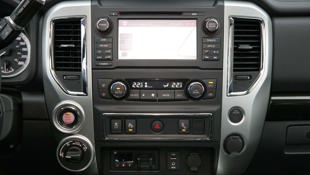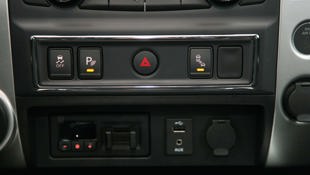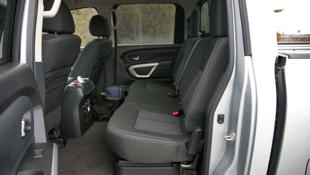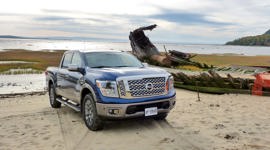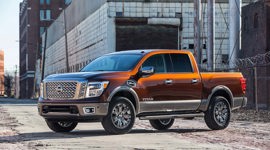 AutoTrader SCORE
AutoTrader SCORE
-
STYLING8/10
-
Safety9/10
-
PRACTICALITY6/10
-
USER-FRIENDLINESS7/10
-
FEATURES7/10
-
POWER9/10
-
COMFORT9/10
-
DRIVING FEEL9/10
-
FUEL ECONOMY7/10
-
VALUE7/10
Nissan has finally updated the Titan! Yes, last year they launched the Titan XD but it cannot be considered a direct successor to the first-generation Titan as it is more of a three-quarter-ton truck than a half-ton.
The 2017 Nissan Titan is a true second-generation Titan and Nissan hopes to capture more of the market with this second kick at the can.
From the front the 2017 looks much larger and taller because of the squared-off front end, but in reality the overall height of the vehicles is the same.
My tester was an SV model, the mid-range offering with a starting price of $48,150; also added to my tester was the Premium option package which adds: Intelligent Key, power sliding rear window, tailgate area illumination, front cloth seats with eight-way power driver’s seat, back-up camera, blind-spot warning with rear cross-traffic alert, bed-mounted 110 V AC outlet, trailer brake controller, tow mirrors and leather-wrapped steering wheel. That’s a lot of items – some utilitarian, some fancy and some I would consider a requirement (like the tow mirrors) – but the pricing for this package seems a little steep to me at $7,650.
Add the running boards, hitch receiver and under-seat lockable storage – accessories that are very useful in this truck – and the price climbs to $60,017. Ouch.
The new Titan is powered by a 5.6L V8 that produces 390 horsepower and 395 lb-ft of torque and it is mated to a seven-speed automatic transmission up two gears and 73 horsepower from the first generation. It offers 4x2, 4x4 high and 4x4 low settings for off-roading but not automatic four-wheel or all-wheel drive. Of course, traction control and stability control are standard as it is mandated now; and you’ll use it with all that power in slippery conditions if you are in normal two-wheel drive mode.
The first generation was produced from 2003 (model year 2004) until 2015 – a little too long without a full update, especially in this segment. I personally used to own a 2005 model so I have some experience with the previous generation to draw some comparisons. But even better, I have a friend, Carey, who currently owns a 2008 Titan SE model which he purchased in 2010.
So Carey and I parked our Titans side-by-side to get a good visual check and once-over. The 2017 Titan is longer, but most of that length is from the engine forward. It was quite apparent when looking under the hood that the front section of the 2017 Titan protrudes further from the engine; I’m guessing but this could aid in weight distribution by moving the engine a little further back. Both trucks are very similar in size otherwise. From the front the 2017 looks much larger and taller because of the squared-off front end, but in reality the overall height of the vehicles is the same.
We noticed the tailgate was much lighter on the 2017 model although some of that weight on the previous generation could be accounted for by the age of the vehicle and the springs losing strength over time, but it was significant.
The body lines and design, although updated and more modernized, really comes off as an evolution of the previous generation with some items being nearly identical, such as the door handles.
Other items carried over include the big tow mirrors, which are essential for towing – but they are not standard across the line. The standard bedliner is a must according to Carey and I agree. The built-in tie-down track system is very useful and he was glad that is also retained.
Moving onto the inside, there’s a lot more rear legroom than the previous generation. Not that the previous generation was severely lacking at all but it is a welcome improvement. Also welcome were the flip/fold seats and optional locking cargo tray that were carried forward. The other change that Carey noted in the rear were the 110 V household outlets in the place of 12 V outlets, which would be more useful for passengers’ devices.
Up front is where you can really see the modernization of the new generation. The dash is much larger and of course updated with today’s technologies. Carey did note that he found the front to be a little more claustrophobic; the larger dash protrudes towards the passengers and seems to eat up more space, a fact which I confirmed by placing a large pizza on the dash easily.
Having the shifter mounted on the steering column instead of the console allows for more storage in the centre. I pointed out to Carey the bins lining the roof that were present in the first generation are missing in the second; he said he never used them anyways – guess that was only me.
Inspection done, the next step was to let Carey take the new truck for a test drive, because I thought if he did, oh boy, he might just end up buying one. He stuck the Titan in reverse and backed out of the parking spot; I don’t think he even noticed the back-up camera as he failed to mention it or use it. As he went to stop to shift into drive, our heads slammed forward and he apologized. But I was ready for it, because I knew exactly what he was about to say: “The brakes on my Titan are so much softer!”
Yes, Nissan has finally fixed the poor brake feel: the new brakes provide confidence and stopping power. Forward progress, on the other hand, was very smooth, especially compared to Carey’s current truck where he has installed more aggressive tires.
We pulled onto the highway and he let the engine roar to life. He was pleased with the exhaust note saying that it was one of the reasons he bought his truck in 2010 – not boisterously loud but very aggressive-sounding when you step on the loud pedal. There is no question the Titan is one of the best-sounding trucks on the market.
Carey then mentioned that he felt the throttle response was not as immediate as his truck – this is an artifact of the drive-by-wire system. Not that the truck was slow by any means, but the seven-speed transmission coupled with the electronically controlled throttle does take a little longer to kick you back into your seat as it downshifts and opens the throttle plates.
In the end, Carey felt that the new Titan was more of the same. If he was looking to replace his truck with something familiar, there is no question the Titan would be high on the list. However, he felt it was so similar that it didn’t seem like a big enough leap to compel him to upgrade. His exact words? “It’s the same with new knick-knacks.”
Over the course of a week of commuting in the Titan I averaged 15.8 L/100 km and on a trip down to Toronto and back from Ottawa 12.5 L/100 km was witnessed. Despite the seven-speed transmission, fuel economy seems a little on the high side and according to Carey that isn’t any better than his truck either.
If you liked the previous-generation Titan, you’ll love this new truck and if you can get over the price the salespeople will have an easy job. But there is where the challenge lies for Nissan as the Titan was never a big seller to begin with, so customers will need to come from a new crowd of truck buyers or conquest sales – and that will be tough.
Of course this new Titan more closely resembles the competition without losing the unique flavour of the past generation and that is a good thing. If you are looking for something just a little bit different the Titan may be the ticket.
| Engine Displacement | 5.6L |
|---|---|
| Engine Cylinders | V8 |
| Peak Horsepower | 390 hp |
| Peak Torque | 395 lb-ft |
| Fuel Economy | 12.6 L/100 km (observed) |
| Cargo Space | N/A |
| Model Tested | 2017 Nissan Titan SV |
| Base Price | $48,150 |
| A/C Tax | $100 |
| Destination Fee | $1,795 |
| Price as Tested | $59,761 |
|
Optional Equipment
$9,716 – SV Premium Package Option Package (Crew Cab) $7,650; running boards $1,159; floor mats $124; under-seat storage bin $674; aluminum kick plate $109
|
|

